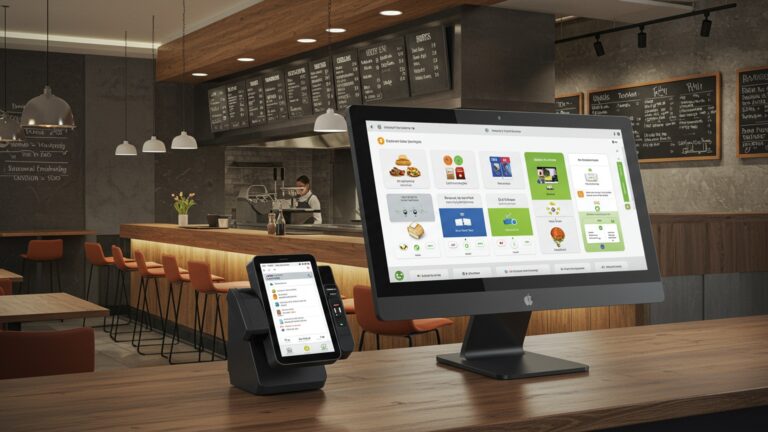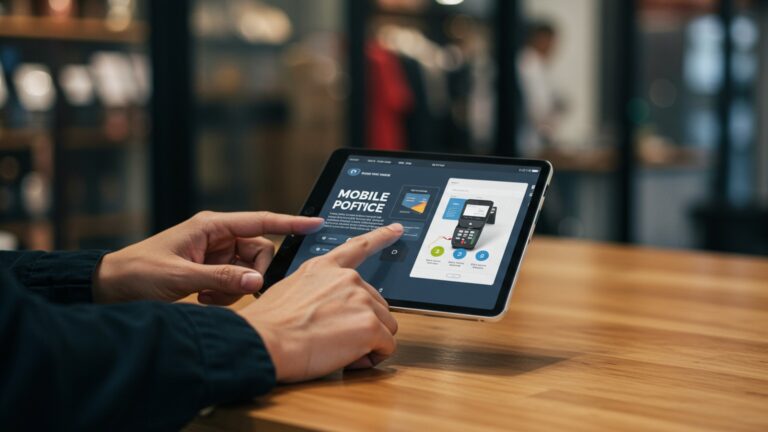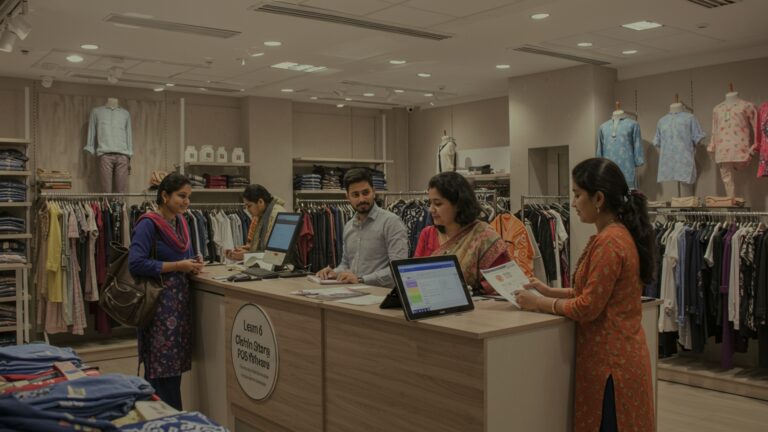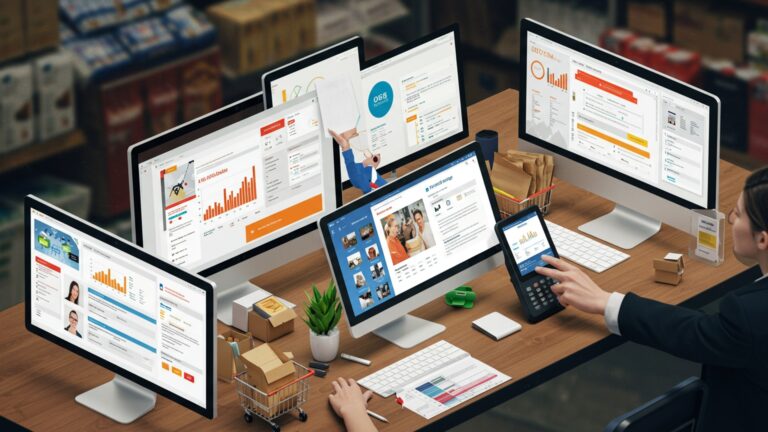Learn How to Choose the Best POS Software for Your Grocery Store
The modern grocery landscape demands more than just basic transaction processing; it requires a sophisticated pos software for grocery store operations that can manage everything from dynamic inventory of perishables and integrated loyalty programs to frictionless customer experiences. Retailers navigating the surge in online orders, curbside pickup. self-checkout lanes interpret that legacy systems cannot keep pace with these evolving demands. A truly optimized system now leverages cloud-based architecture for real-time data analytics, enabling precision in managing shrink, optimizing labor scheduling. personalizing offers via mobile apps. This crucial technology transforms routine sales into actionable insights, driving profitability and customer retention in a fiercely competitive market, moving beyond a simple checkout terminal to become the central nervous system of your entire retail ecosystem.
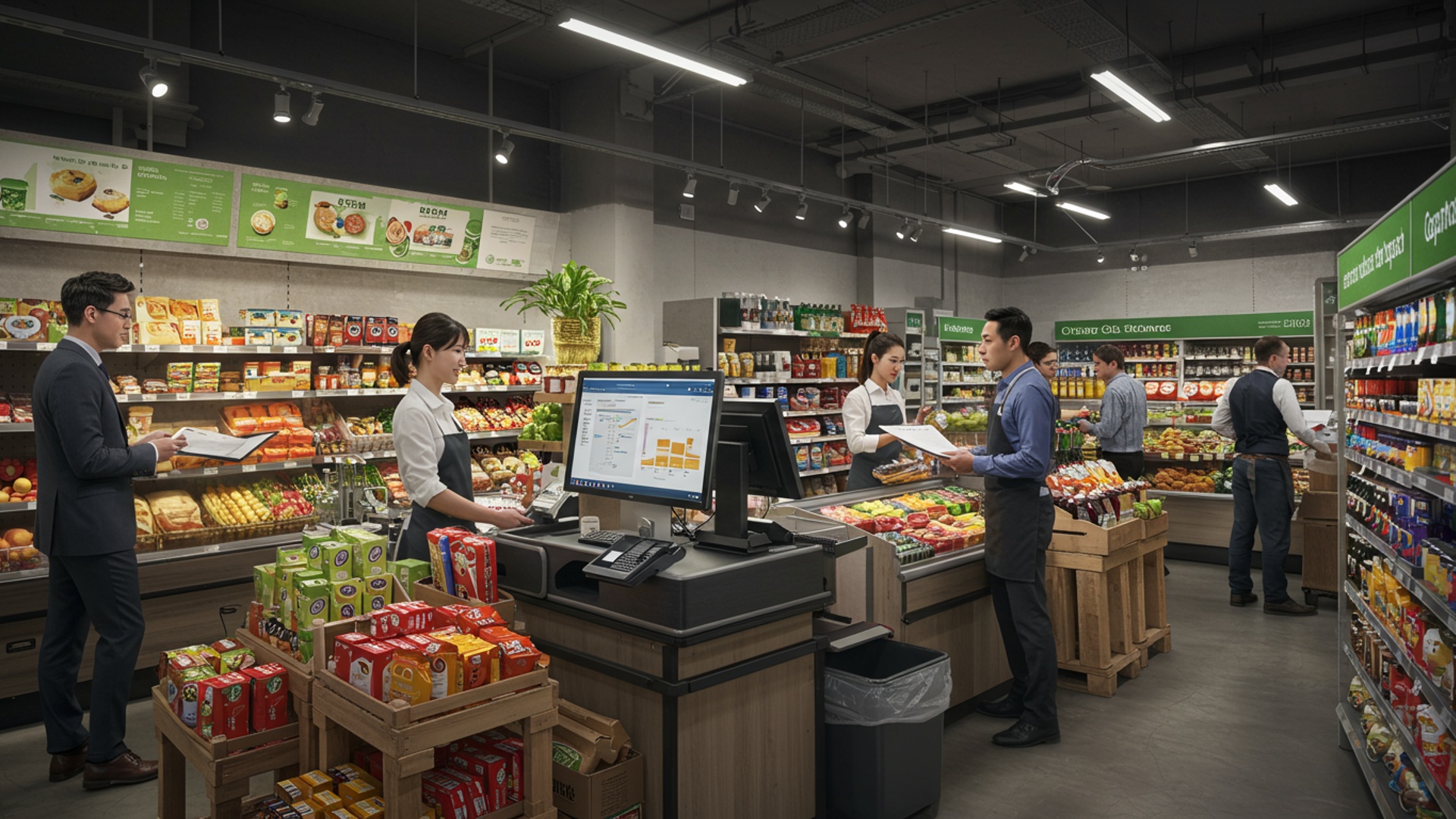
Understanding the Crucial Role of POS Software for Your Grocery Store
In the fast-paced retail environment of today, particularly within the grocery sector, efficiency and accuracy are paramount. A Point of Sale (POS) system is no longer just a cash register; it’s the central nervous system of your operation. For a grocery store, a specialized POS software solution goes beyond basic transactions, serving as an integrated platform that manages everything from inventory to customer loyalty, ensuring smooth daily operations and driving profitability.
At its core, POS software for grocery store environments processes sales transactions. But, the unique demands of a grocery business—dealing with perishable goods, varying unit types (by weight, by count), rapid inventory turnover. a high volume of transactions—necessitate a robust and tailored system. It streamlines checkout lines, minimizes errors. provides invaluable insights into your business performance, ultimately enhancing both operational efficiency and customer satisfaction.
Essential Core Features for Grocery Store POS Software
When evaluating POS software for grocery store needs, certain features are non-negotiable. These functionalities address the specific challenges and requirements of managing a diverse and high-volume product range.
- Advanced Inventory Management
- Real-time tracking of inventory levels across multiple departments.
- Support for various unit types (e. g. , individual items, cases, weight-based items like produce or deli meats).
- Batch and lot tracking for recalls and expiry date management.
- Automated reorder points and vendor management integration to prevent stockouts and reduce waste.
- Wastage tracking and reporting for perishable goods.
- Rapid Barcode Scanning and Label Printing
- Customer Relationship Management (CRM) and Loyalty Programs
- Capture customer data (with consent).
- Implement loyalty programs (points, discounts, exclusive offers).
- Track purchase history to personalize promotions.
- Manage gift cards and store credit.
- Comprehensive Reporting and Analytics
- Sales trends (daily, weekly, monthly, by department, by item).
- Inventory velocity and shrinkage.
- Employee performance.
- Peak transaction times to optimize staffing.
- Profit margins by product category.
- Flexible Payment Processing
- All major credit and debit cards (EMV chip readers).
- Contactless payments (NFC, Apple Pay, Google Pay).
- EBT/SNAP processing.
- Gift cards and store credit.
- Split tenders.
- Scalability and Multi-Store Management
- Employee Management
- Promotions and Discount Management
- Returns and Exchanges
This is perhaps the most critical feature. Grocery stores deal with thousands of SKUs, many of which are perishable. The ideal POS software for grocery store operations will offer:
Speed is essential at the checkout. The POS system must integrate seamlessly with high-speed barcode scanners (2D and 1D) and offer on-demand label printing for items without existing barcodes or for special promotions.
Building customer loyalty is vital. A robust POS software for grocery store environments should allow you to:
Data is power. Your POS should provide detailed reports on:
Customers expect diverse payment options. Ensure the POS supports:
If you plan to expand or already operate multiple locations, the POS software for grocery store businesses must support centralized management of inventory, pricing. reporting across all stores.
Track employee hours, manage permissions. monitor sales performance for individual cashiers.
Easily set up and manage complex promotions like “buy one get one free,” percentage discounts, multi-buy deals. seasonal sales.
A streamlined process for handling customer returns and exchanges, including the ability to restock items and process refunds/store credits efficiently.
Advanced Features to Enhance Your Grocery Operations
Beyond the essentials, certain advanced functionalities can give your grocery store a significant competitive edge and prepare it for future retail trends.
- E-commerce and Online Ordering Integration
- Self-Checkout Options
- Food Waste Reduction Tools
- Integration with Accounting Software
- Mobile POS (mPOS) Capabilities
- AI/ML for Demand Forecasting
As online grocery shopping surges, seamless integration with an e-commerce platform is crucial. This enables online order fulfillment, curbside pickup. local delivery services, all managed through your central POS software.
Reduce labor costs and improve customer flow during peak hours by offering self-checkout kiosks integrated with your main POS system.
Leverage data analytics to predict demand more accurately, manage expiry dates. identify slow-moving items for strategic promotions, thereby minimizing spoilage and waste.
Automate data transfer to your accounting software (e. g. , QuickBooks, Xero) to simplify bookkeeping, payroll. financial reporting.
Equip staff with handheld devices to assist customers on the floor, conduct inventory checks, or even process sales during busy periods or for pop-up events.
Some advanced POS systems use artificial intelligence and machine learning to assess historical sales data, seasonal trends. even external factors like weather to provide highly accurate demand forecasts, optimizing ordering and reducing waste.
On-Premise vs. Cloud-Based POS: A Critical Comparison
One of the fundamental decisions you’ll face when selecting POS software for grocery store operations is whether to opt for an on-premise or cloud-based solution. Each has distinct advantages and disadvantages.
| Feature | On-Premise POS | Cloud-Based POS |
|---|---|---|
| Definition | Software installed and run on your local servers and computers. You own the software license. | Software hosted on remote servers and accessed via the internet (SaaS – Software as a Service). |
| Cost Structure | Higher upfront cost (software license, servers, IT infrastructure). Lower ongoing subscription fees. | Lower upfront cost (minimal hardware). Higher ongoing monthly/annual subscription fees. |
| Accessibility | Typically limited to your store’s network. Remote access requires complex setup (VPN). | Accessible from any internet-connected device, anywhere, anytime. Ideal for multi-store management. |
| Maintenance & Updates | Your responsibility (or dedicated IT staff/contractor). Manual updates, potential downtime. | Managed by the vendor. Automatic updates, often seamless and outside business hours. |
| Data Security | You are responsible for data backups and security. Greater control but also greater responsibility. | Vendor is responsible for data security, backups. compliance. Often more robust security infrastructure. |
| Scalability | Can be challenging and costly to scale up (requires new hardware/licenses). | Highly scalable; easily add or remove terminals, stores, or features as needed. |
| Integration | May require custom development for integration with other systems. | Often has a wide range of pre-built integrations with e-commerce, accounting. other platforms. |
| Internet Dependency | Can function offline, though some features might be limited. | Requires a stable internet connection for full functionality. many offer an offline mode for transactions. |
For most modern grocery stores, especially those looking for flexibility, scalability. reduced IT overhead, cloud-based POS software for grocery store operations is often the preferred choice. It allows for easier remote management, seamless updates. better integration with other digital tools.
Key Factors in Choosing Your POS Software for Grocery Store
Beyond features, several practical considerations will guide your final decision. This is where the rubber meets the road, ensuring the chosen system truly fits your unique business context.
- Budget
- Ease of Use and Training
- Customer Support
- Security
- Customization and Flexibility
- Vendor Reputation and Longevity
- Hardware Compatibility
- Scalability for Future Growth
grasp both the upfront costs (hardware, setup, initial software license for on-premise) and ongoing costs (subscription fees, support plans, transaction fees). Balance features with affordability, ensuring a good return on investment.
A complex system will slow down your staff and lead to errors. Opt for intuitive POS software for grocery store staff that requires minimal training. Test the interface with your cashiers before committing.
24/7 reliable customer support is crucial. When your system goes down during peak hours, you need immediate assistance. Inquire about response times, support channels (phone, chat, email). the availability of dedicated account managers.
Data security is paramount, especially when handling customer payment insights. Ensure the POS software is PCI compliant, offers end-to-end encryption. has robust fraud prevention measures.
Your grocery store has unique workflows. Can the POS system be customized to fit your specific needs, such as custom reports, unique loyalty programs, or specialized product categories?
Research the vendor’s track record, read reviews. comprehend their commitment to ongoing development and support. A reliable vendor ensures your POS software for grocery store needs will evolve with technology.
Consider if you need new hardware (scanners, printers, cash drawers, scales) or if the software integrates with your existing equipment.
Even if you’re a small store now, choose a system that can grow with you. Can it handle increased inventory, more employees, or additional store locations without a complete system overhaul?
Implementing Your New POS System and Training Your Team
Once you’ve chosen the best POS software for your grocery store, the implementation phase is critical for a smooth transition. This isn’t just about installing software; it’s about integrating it into your daily operations.
- Data Migration
- Hardware Setup
- Staff Training
- Pilot Testing
- Go-Live Support
This involves transferring your existing product catalog, customer data. sales history into the new system. Work closely with your vendor to ensure data integrity and minimize downtime.
Install and configure all necessary hardware, including POS terminals, barcode scanners, receipt printers, cash drawers. integrated scales for produce and deli items.
Comprehensive training for all employees who will interact with the system is vital. This includes cashiers, inventory managers. store managers. Focus on practical scenarios, troubleshooting common issues. utilizing all key features. Many vendors offer training modules or live webinars.
Before a full rollout, conduct a pilot test in a controlled environment or during off-peak hours to identify and resolve any unforeseen issues.
Ensure you have extra support from the vendor or a dedicated IT person during the initial “go-live” period to quickly address any problems.
For example, a family-owned grocery store in Ohio, “FreshHarvest Market,” recently upgraded their decades-old cash registers to a cloud-based POS software for grocery store operations. They invested in extensive staff training and leveraged the system’s inventory management features. Within six months, they reported a 15% reduction in inventory shrinkage, a 20% increase in average transaction speed. a noticeable boost in customer loyalty program engagement, attributing these improvements directly to their new, purpose-built POS system.
Conclusion
Choosing the right POS for your grocery store is far more than just picking a billing system; it’s about future-proofing your entire operation. I always advise grocery owners to prioritize robust inventory management—think real-time tracking of fresh produce to minimize waste and maximize shelf life, a crucial factor often overlooked. Consider how a system integrates with online ordering platforms, a current trend driven by evolving consumer habits, or offers personalized loyalty programs to keep customers returning. My unique insight is this: don’t just look at features, envision your busiest hour and how the POS will perform under pressure, ensuring swift checkout lines even with complex discounts or multiple payment methods like UPI and contactless cards. For deeper insights into global grocery tech advancements, resources like [Forbes Retail Tech](https://www. forbes. com/retail/) can offer valuable perspectives. Test drive a few options, talk to other local grocers. never settle for a system that doesn’t feel intuitive. This strategic investment will undoubtedly empower your growth, transforming daily operations and boosting profitability for years to come.
More Articles
7 Essential Inventory Management POS Tips for Indian Businesses
How to Master Billing and POS Software for Efficient Retail Management
Learn 9 Practical Strategies to Streamline Billing Process and Boost Business Efficiency
A Complete Guide to Choosing the Best POS Software for Retail
10 Essential Tips to Prevent Billing Errors and Save Your Business Money
FAQs
Why bother with new POS software for my grocery store anyway?
A good POS system isn’t just for ringing up sales. It helps you track inventory, manage your employees, speed up checkout lines. even interpret what products are selling best. It’s really about making your whole operation smoother and more profitable, giving you better insights into your business.
What are the absolute must-have features for grocery store POS?
You’ll definitely want robust inventory management (think real-time tracking, low-stock alerts. easy receiving), fast barcode scanning, scale integration for produce, customer loyalty programs. strong reporting features to see your sales trends. Employee management and time clock functions are also super useful for daily operations.
How much should I expect to pay for a decent grocery store POS system?
Prices vary a lot! You might find subscription-based systems starting from $50-$100 per month per terminal, plus hardware costs which could range from a few hundred to a couple of thousand dollars depending on what you need (scanners, printers, cash drawers, scales). It’s an investment. the right system can pay for itself in efficiency and insights surprisingly quickly.
Is setting up new POS software a massive headache? I’m worried about the transition.
It can seem daunting. many modern POS systems are designed to be user-friendly. Most vendors offer installation support, training. data migration assistance. The key is to choose a vendor with good customer support and a clear onboarding process. A little planning goes a long way. a smooth transition is definitely achievable.
Can a POS system really help me manage my perishables better and reduce waste?
Absolutely! With features like real-time inventory tracking, expiry date management. detailed sales reports, you can better predict demand, optimize ordering. quickly identify slow-moving items. This significantly helps in reducing spoilage and waste, especially for fresh produce, dairy. baked goods, directly impacting your bottom line.
What kind of customer support should I look for in a POS provider?
This is crucial! You want a provider that offers reliable, responsive support – ideally 24/7 or at least extended hours that cover your store’s operating times. Look for options like phone, email. chat support. check reviews to see how other users rate their help when issues arise. You don’t want to be stuck during a busy rush because you can’t get help.
What’s the deal with cloud-based vs. on-premise POS for grocery stores? Which is generally better?
Cloud-based systems are generally preferred for grocery stores these days. They store your data online, meaning you can access it from anywhere, updates are automatic. they often have lower upfront costs. On-premise systems store data locally, require more IT setup and maintenance. can offer more customization and work without an internet connection (though many cloud systems also have offline modes). For most grocery stores, the flexibility, ease of maintenance. scalability of cloud are big wins.


